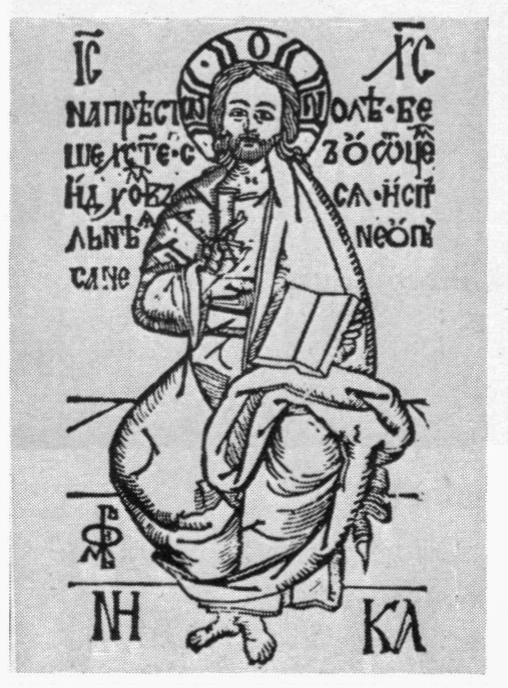|
Filip Moldoveanul
Filip Moldoveanul (Philip the Moldavian) printed in the Transylvanian city of Sibiu the so-called Catehismul Lutheran (the Lutheran Catechism) in 1544, the first book printed in the Romanian language. In 1550, he also printed the first Slavonic-Romanian Tetravanghel (The Four Gospels), also in Sibiu. Career Filip Moldoveanul was also known as Philip the Painter and was mentioned in 1521 as having been a liaison from the Sibiu Chancellery to the Romanian Countries. He was also noted as an envoy on missions sent to Radu Paisie, prince of Wallachia, from 1537 to 1539. References Romanian printers {{Romania-bio-stub ... [...More Info...] [...Related Items...] OR: [Wikipedia] [Google] [Baidu] |
Monogram Of Filip Moldoveanul
A monogram is a motif made by overlapping or combining two or more letters or other graphemes to form one symbol. Monograms are often made by combining the initials of an individual or a company, used as recognizable symbols or logos. A series of uncombined initials is properly referred to as a cypher (e.g. a royal cypher) and is not a monogram. History Monograms first appeared on coins, as early as 350 BC. The earliest known examples are of the names of Greek cities which issued the coins, often the first two letters of the city's name. For example, the monogram of Achaea consisted of the letters alpha (Α) and chi (Χ) joined together. Monograms have been used as signatures by artists and craft workers on paintings, sculptures and pieces of furniture, especially when guilds enforced measures against unauthorized participation in the trade. A famous example of a monogram serving as an artist's signature is the "AD" used by Albrecht Dürer. Christograms Over the centuries, ... [...More Info...] [...Related Items...] OR: [Wikipedia] [Google] [Baidu] |
Transylvania
Transylvania ( ro, Ardeal or ; hu, Erdély; german: Siebenbürgen) is a historical and cultural region in Central Europe, encompassing central Romania. To the east and south its natural border is the Carpathian Mountains, and to the west the Apuseni Mountains. Broader definitions of Transylvania also include the western and northwestern Romanian regions of Crișana and Maramureș, and occasionally Banat. Transylvania is known for the scenery of its Carpathian landscape and its rich history. It also contains Romania's second-largest city, Cluj-Napoca, and other iconic cities and towns such as Brașov, Sibiu, Târgu Mureș, Alba Iulia and Sighișoara. It is also the home of some of Romania's UNESCO World Heritage Sites such as the Villages with fortified churches, the Historic Centre of Sighișoara, the Dacian Fortresses of the Orăștie Mountains and the Roșia Montană Mining Cultural Landscape. It was under the rule of the Agathyrsi, part of the Dacian Kingd ... [...More Info...] [...Related Items...] OR: [Wikipedia] [Google] [Baidu] |
Sibiu
Sibiu ( , , german: link=no, Hermannstadt , la, Cibinium, Transylvanian Saxon: ''Härmeschtat'', hu, Nagyszeben ) is a city in Romania, in the historical region of Transylvania. Located some north-west of Bucharest, the city straddles the Cibin River, a tributary of the river Olt. Now the capital of the Sibiu County, between 1692 and 1791 and 1849–65 Sibiu was also the capital of the Principality of Transylvania. Nicknamed ''The City with Eyes'', the city is a well-known tourist destination for both domestic and foreign visitors. Known for its culture, history, gastronomy and diverse architecture, which includes the iconic houses with eyes that gave Sibiu its nickname, the city has garnered significant attention since the beginning of the 21st century. In 2004, its historical center began the process of becoming a UNESCO World Heritage Site. Sibiu was designated the European Capital of Culture in 2007. One year later, it was ranked "Europe's 8th-most idyllic place to l ... [...More Info...] [...Related Items...] OR: [Wikipedia] [Google] [Baidu] |
Radu Paisie
Radu VII Paisie, officially Radul ( Church Slavonic: Радул воєвода), also known as Radu vodă Măjescul, Radu vodă Călugărul, Petru I, and Petru de la Argeș (ca. 1500 – after 1545), was Prince of Wallachia almost continuously from June 1535 to February 1545. A man of uncertain origins, he depicted himself as an heir to the House of Basarab and the Drăculești: the son of Prince Radu the Great and half-brother of Vlad Vintilă and Radu of Afumați. The scholar Nicolaus Olahus partly supported this account and further claimed that Paisie was his own cousin. The descent is endorsed by some modern historians, whereas others suggest that Paisie was a regular member of the boyar class, or even a fishmonger. He is known to have been a monk of the Wallachian Orthodox Church before his coronation. Paisie took the throne as a boyar favorite in the wake of Vlad Vintilă's assassination. Despite his immediate homage to the Ottoman Empire, which exercised suzerain p ... [...More Info...] [...Related Items...] OR: [Wikipedia] [Google] [Baidu] |



